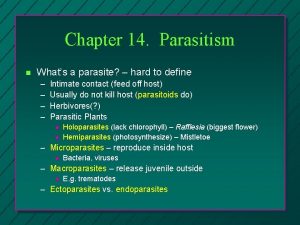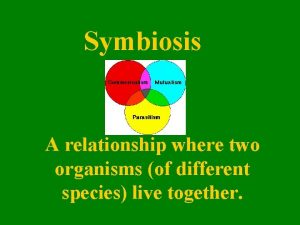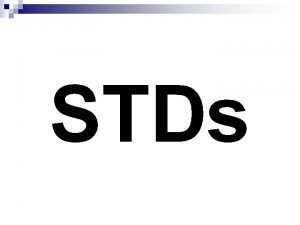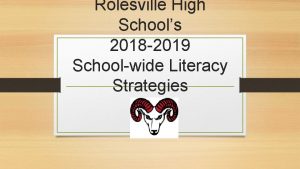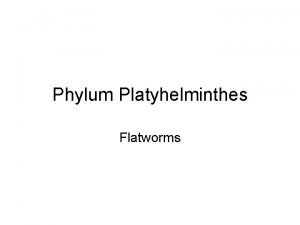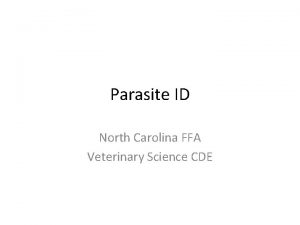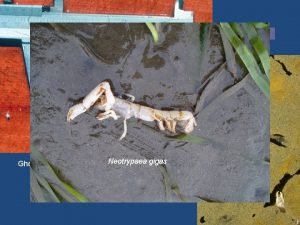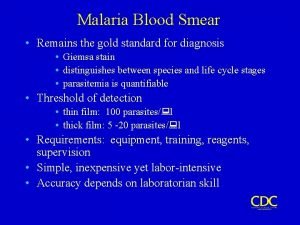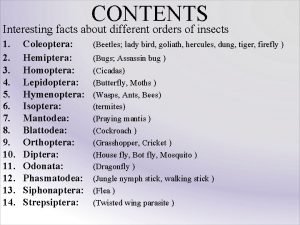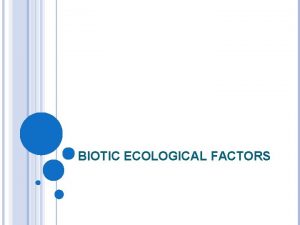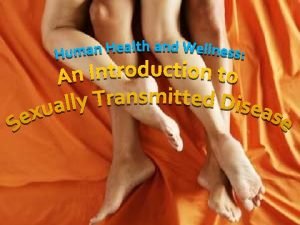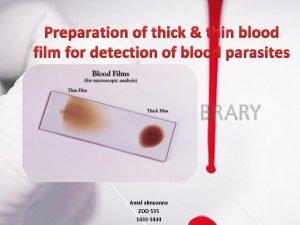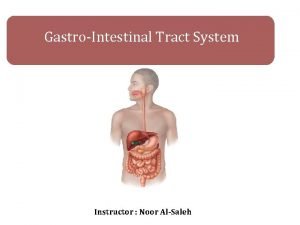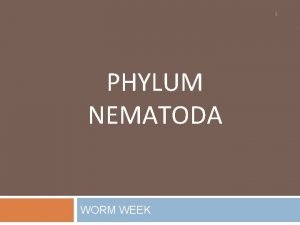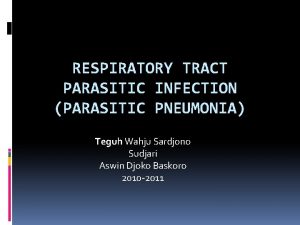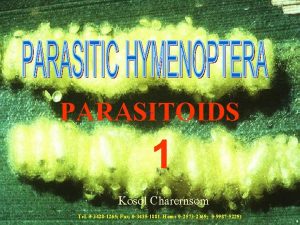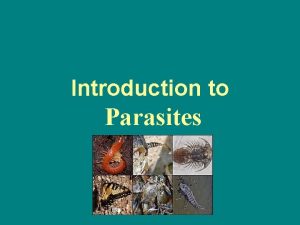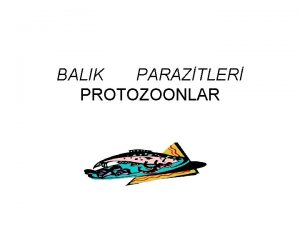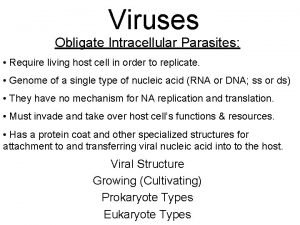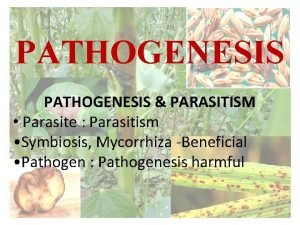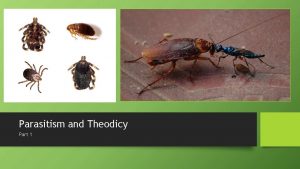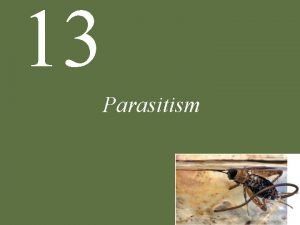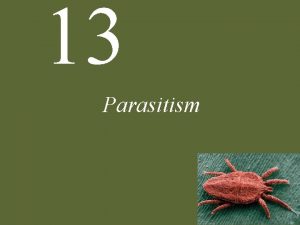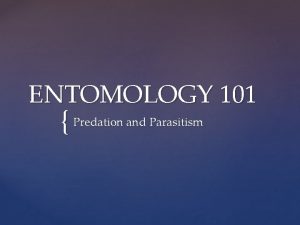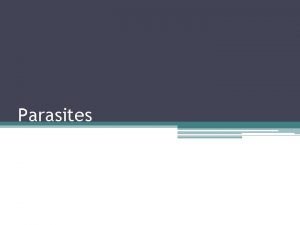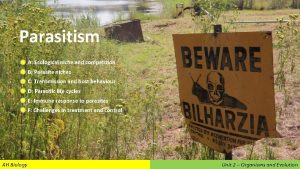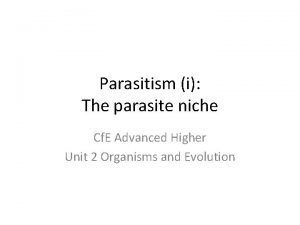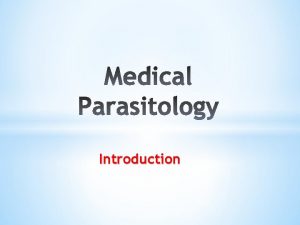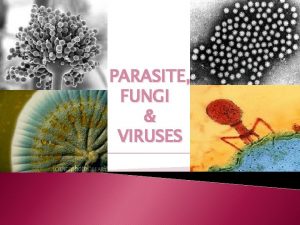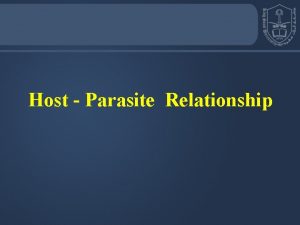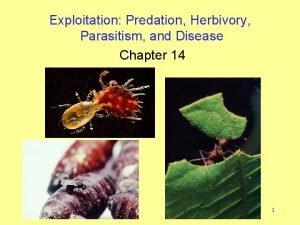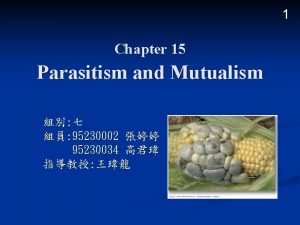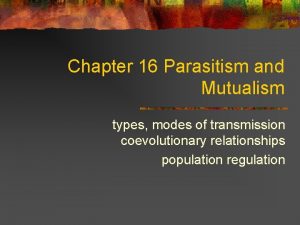Chapter 14 Parasitism n Whats a parasite hard

























- Slides: 25

Chapter 14. Parasitism n What’s a parasite? – hard to define – – Intimate contact (feed off host) Usually do not kill host (parasitoids do) Herbivores(? ) Parasitic Plants n n Holoparasites (lack chlorophyll) – Rafflesia (biggest flower) Hemiparasites (photosynthesize) – Mistletoe – Microparasites – reproduce inside host n Bacteria, viruses – Macroparasites – release juvenile outside n E. g. trematodes – Ectoparasites vs. endoparasites

“Weird” Parasites n Nest Parasites – Brownheaded Cowbird – European Cuckoo n Sexual Parasites – Gynogenetic fishes Amazon molly n Resided/Finescale Dace hybrid n

Parasitism Common n Possibly more parasites than anything else – 50% of insects parasitic – Potentially 4: 1 parasites: free-living forms n Often complex life cycles – E. g. lancet fluke, other trematodes n Several intermediate hosts



Modeling Parasitism n Complex because of intermediate hosts, and infection rate – Not usually sensitive to “actual” r for parasite (this is gigantically high) – Important variables: n n Rp – number of infected hosts If Rp > 1 then parasite spreads – For microparasites n n Rp = NBL N – density of susceptible hosts B – transmission rate of parasite L – length of time host is infectious – Nt (host pop. size) = 1/BL (if Rp = 1) n Critical host density (upshot is disease cycles as Nt reached by recruitment)


Effects on natural populations n Introduced parasites – large effect – Chestnut blight, Dutch elm etc. n Natural systems – Dodder (Cuscuta) – plant parasite – may act to maintain diversity – Fuller and Blaustein – deer mice n Found infected had lower overwinter survival – Hurtrez-Bousses – microwaved blue tit nests n Found higher size at fledging and lower failure rate – Red Grouse




Community Effects n Brainworm – host is white-tailed deer – Not much effect – All other cervids and pronghorns susceptible – “apparent competition” – as white-tailed deer expand range, other species affected n Other examples of effects – Flour beetles, Anolis lizards

Biocontrol n Some success (about 16%) n n E. g. myxoma and rabbits in Australia Evolution of reduced virulence – How much of the rest deleterious uncertain – Pesticides degrade in environment – Introduced parasites remain n Switch hosts? ? Cause other problems? Some advocate shotgun approach Some advocate “targeted” approach – I think – last-ditch effort (and maybe not even then)


Mutualism Both species benefit n Plant-pollinator n – Often tightly coevolved relationships E. g. figs and fig wasps – 900 species of figs, each with its own pollinating wasp n Yucca plants and yucca moths n – Perhaps each trying to “cheat”? n Reciprocal parasitism?


Seed Dispersal n Fruits attract dispersers – Color, smell, abundance etc. n Hypotheses for seed dispersal – Reduced competition – Colonization hypothesis – Directed dispersal hypothesis (ants) – Predator escape hypothesis

Variety of Mutualisms n Resources – Leaf cutting ants/fungus – Nitrogen fixing bacteria / plants n Protection – Cleaner fish and “customers” n Some are mimics (cheaters) – Ants and aphids – Ants and acacia trees (herbivory) n Obligate mutualisms – – – Lichens (algae and fungus) Ruminants/bacteria Deep sea fishes/luminescent bacteria Corals/zooxanthellae Endosymbiont theory

Modeling Mutualism n Similar to Lotka-Volterra comp. eqns. – Replace negative effect with positive – Change K to X (carrying capacity is raised) Can become weird (unstable) or can become stable when facultative n Obligate mutualisms even more unstable (though obviously there are stable areas) n



Indirect effects on community n Mycorrhizal fungi / plants – Reduce herbivory Increased vigor n Increased antiherbivore defenses n – Increased mycorrhizal diversity can be positive for community – Or…introduced mutualists can out-compete (endophytes in Indiana)


Commensalisms Cattle egrets/cattle n Clinging seeds and hosts n Flower mites and hummingbird nostrils n

 Whats parasitism
Whats parasitism Gravimetric analysis of calcium and hard water
Gravimetric analysis of calcium and hard water Work hard have fun make history
Work hard have fun make history Hard times hard drive
Hard times hard drive Commensalism symbiotic relationship
Commensalism symbiotic relationship Examples of commensalism
Examples of commensalism Std from oral
Std from oral An unlikely parasite: the mistletoe answer key
An unlikely parasite: the mistletoe answer key Flatworms acoelomates
Flatworms acoelomates Calliphoridae
Calliphoridae Shrimp parasite
Shrimp parasite Dot
Dot How many herbivores are there
How many herbivores are there Do beetles taste like apples
Do beetles taste like apples Parasite structure
Parasite structure Parasite std
Parasite std Thick and thin film preparation
Thick and thin film preparation Hyminoptera
Hyminoptera Balantidium trophozoite
Balantidium trophozoite Source
Source Parasite that causes loeffler's syndrome
Parasite that causes loeffler's syndrome Cirrospilus
Cirrospilus Parasite introduction
Parasite introduction Parasite
Parasite Invertebrates characteristics
Invertebrates characteristics Obligate intracellular parasite
Obligate intracellular parasite
